Key in a search term below to search our website.
Key in a search term below to search our website.
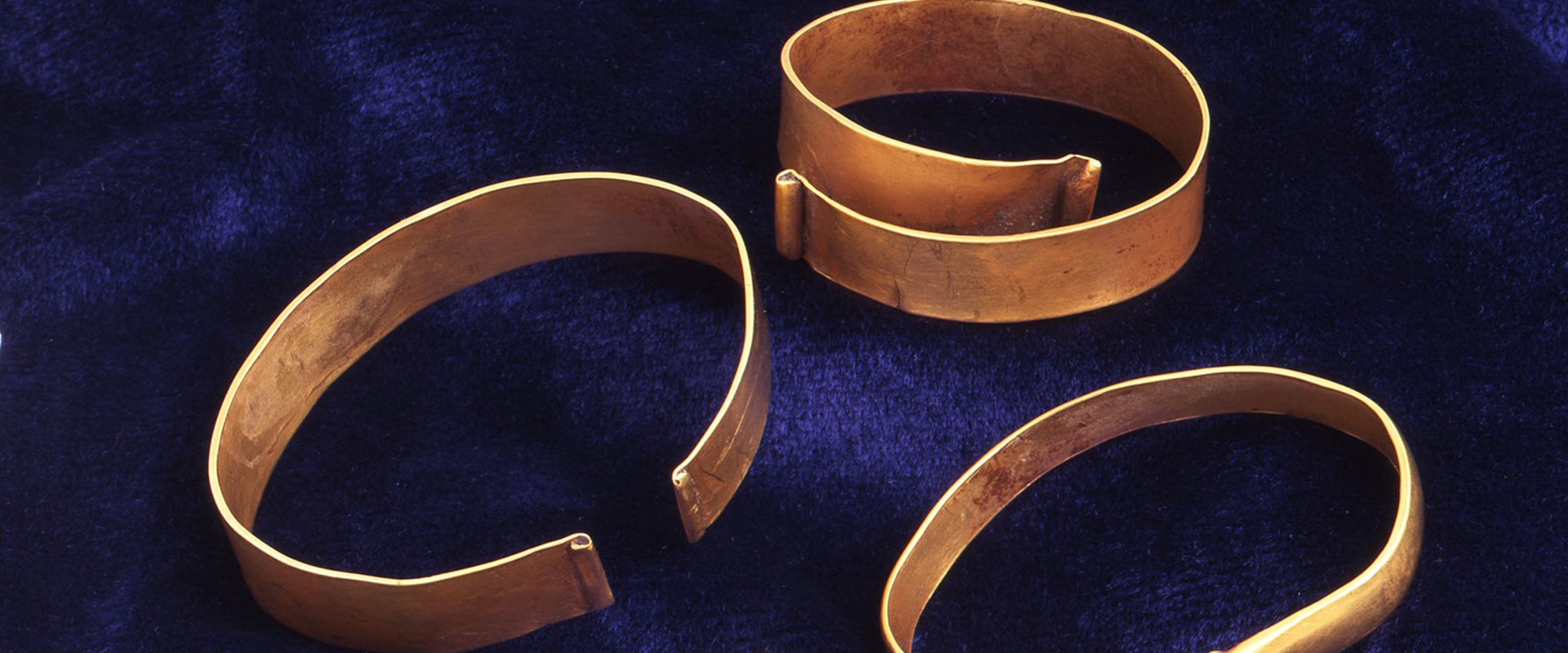
Our sixth object of the week takes us back to South West England and the sunny coast of Devon…
In 1986, a gold bracelet hoard was found in Colaton Raleigh, Devon – the first of its kind from the county! The hoard dates to the Late Bronze Age (1000-800 BC) and consists of three gold bracelets and a clipped fragment of gold sheet. These were buried ‘nested’ one inside the other.
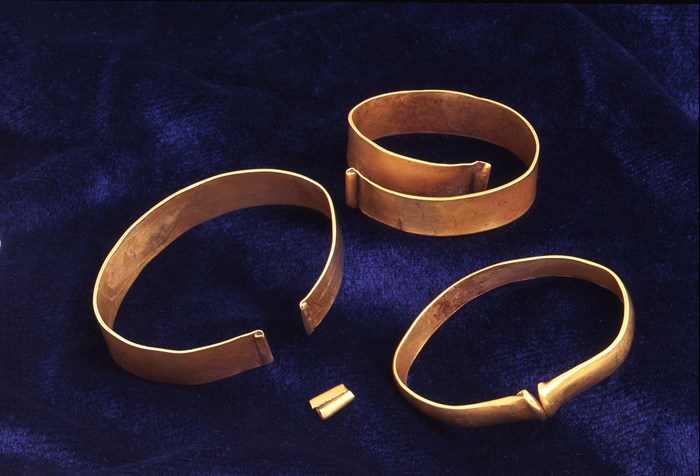
The Colaton Raleigh hoard. Photo © Royal Albert Memorial Museum.
The bracelets are simple in form, produced from a thin band of gold with variations in the ends (terminals). The ends of two of the bracelets have been rolled back, whilst the terminals of the third bracelet have been hammered into an outward projecting form. These are common styles for Late Bronze Age bracelets and would not have been particularly difficult for a practised goldsmith to produce.
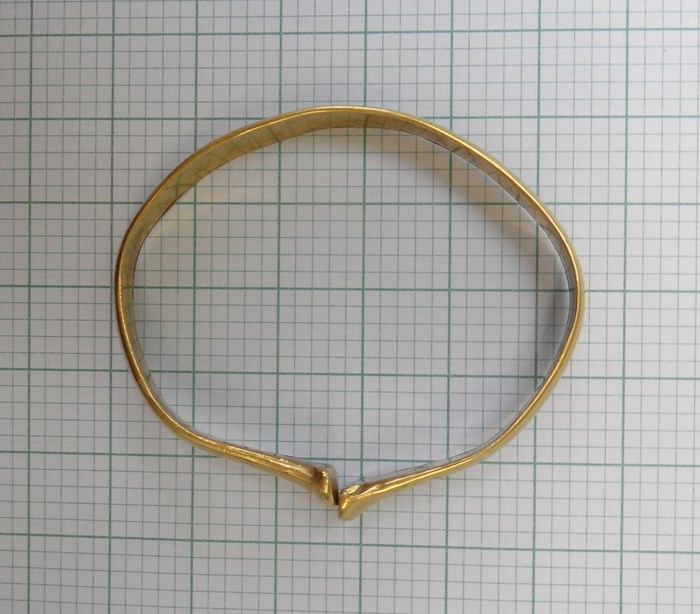
The bracelet with hammered terminals. Photo: M Knight courtesy of RAMM, Exeter.
Analysis of the gold composition shows that two of the bracelets probably came from the same gold melt. Colaton Raleigh is situated in East Devon, away from the main sources of gold in the South West and further analysis is required to see if the source of gold could be linked to South West England or came from elsewhere.
Similar bracelets have been found elsewhere in Britain. At the midden site at Brean Down, Somerset, two gold bracelets curled one inside the other were found, as well as a clipped gold fragment. Another gold bracelet with a clipped fragment was found at Potterne, Wiltshire. Meanwhile, at Llanarmon-yn-Iâl, Wales, a gold clipping, two gold bracelets and a gold ingot were put inside a socketed axehead before they were buried.
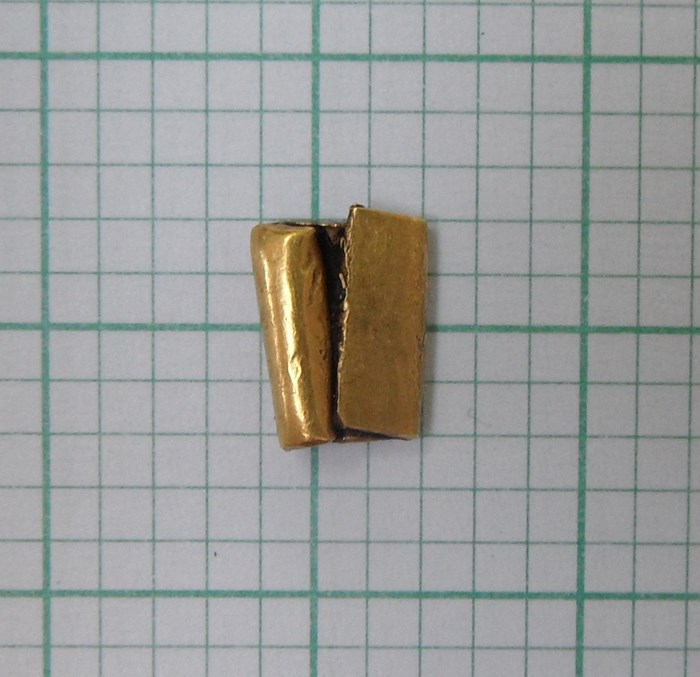
The clipped gold fragment from Colaton Raleigh. Photo: M Knight courtesy of RAMM, Exeter.
Previously, people have suggested that the clipped fragments indicated that these bracelets were buried as part of a goldworking practice. As more bracelet hoards show up though, it becomes more obvious that there was something significant about including a small fragment of gold with complete bracelets. There also seems to be a common link with manipulating the bracelets. At Colaton Raleigh they were nested one inside the other, whilst at Brean Down they were interlinked and at Llanarmon-y-Iâl they were put inside an axehead.
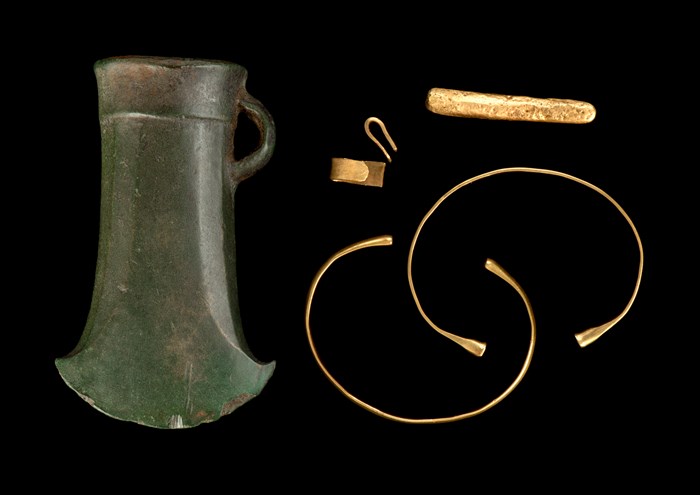
The Llanarmon-y-Iâl hoard, Wales (AC-NMW Acc. Nos. 82.93H/1-5 & 82.109H) © Amgueddfa Cymru – National Museum Wales.
The broad geographic links through these common practices show that there was a specific, widely understood way to treat gold objects before burial. Most areas only have one or two bracelet hoards which suggests that when bracelets were buried, it was a one-off event that may have had great significance to an individual or community and the manipulation may have been part of it.
It’s only by drawing in these comparisons that we can start to appreciate the value and the nature of gold during the Late Bronze Age. In isolation, the Colaton Raleigh hoard is remarkable as the only one of its kind from this area suggesting a special event, but when we zoom out the big picture, it’s clear that it fits nicely within other ideas of the period. Focusing at these two levels allows us to continue to develop better interpretations in the study of Bronze Age gold.
The Colaton Raleigh bracelets were acquired through the Treasure process and are on display at the Royal Albert Memorial Museum in Exeter. The online collection can be accessed here. Thanks to Tom Cadbury for his assistance with this post.
 By Matthew Knight, Curator of Chalcolithic and Bronze Age Prehistory
By Matthew Knight, Curator of Chalcolithic and Bronze Age Prehistory